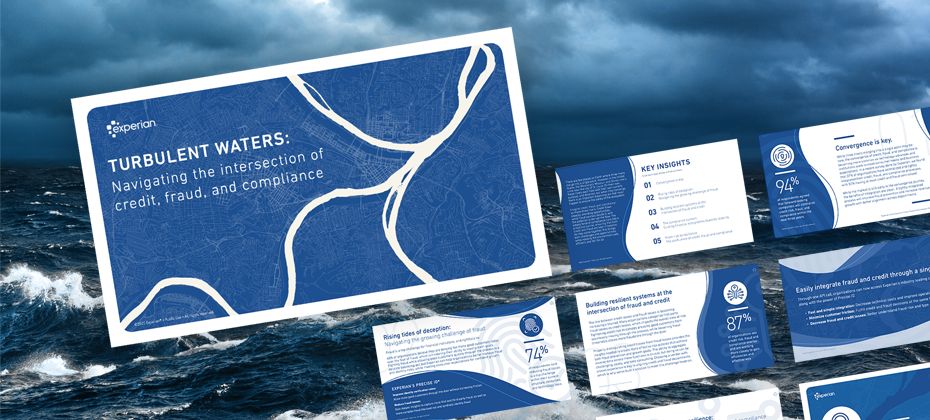
Do you know where your customers stand? Not literally, of course, but do you know how recent macroeconomic changes and their personal circumstances are currently affecting your portfolio?
While refreshing your customers’ credit data quarterly works for some aspects of portfolio management, you need more frequent access to fresh data to quickly respond to risky customer behavior and new credit needs before your portfolio takes a hit.
Use triggers to improve portfolio management
Event-based credit triggers provide daily or real-time alerts about important changes in your customers’ financial situations. You can use these to manage risk by promptly responding to signs of changing creditworthiness or to prevent attrition by proactively reaching out to customers who are shopping for credit.
Risk Triggers℠ and Retention Triggers℠ offer a real-time solution that can be customized to fit your needs for daily portfolio management.
What are Risk Triggers?
Experian’s Risk Triggers alert you of notable information, such as unfavorable utilization rate changes, delinquencies with other lenders and recent activity with high-interest, short-term loan products. This solution allows you to monitor how your customers manage accounts with other lenders to get ahead of potential risk on your book. You can use Risk Triggers to get daily insights into your customers’ activity — allowing you to quickly identify potentially risky behavior and take appropriate action to limit your exposure and losses.
Types of Risk Triggers
Choose from a defined Risk Triggers package that could help you identify high-risk customers, including:
- New trades
- Increasing credit utilization or balances over limit
- New collection accounts
- An account is charged-off
- A credit grantor closes an account
- New delinquency statuses (30 to 180 days past due)
- Consumers seeking access to short-term, high-risk financing options
- Bankruptcy and deceased events
How to use Risk Triggers
You can use the daily alerts from Risk Triggers to help inform your account management strategy. Depending on the circumstances, you might:
- Decrease credit limits
- Close or freeze accounts
- Accelerate payment requests
- Continue monitoring accounts for other signs of risk
Spotlight on Experian’s Clarity Services events
Included in Risk Triggers are events from Experian’s Clarity Services, which draw on expanded FCRA-regulated data* from a leading source of alternative financial credit data.
For example, you could get an alert when someone has a new inquiry from non-traditional loans. These triggers provide a broader view of the customer – offering added protection against risky behavior.
What are Retention Triggers?
Experian’s Retention Triggers can alert you when a customer improves their creditworthiness, is shopping for new credit, opens a new tradeline or lists property. Proactively responding to these daily alerts can help you retain and strengthen relationships with your customers — which is often less expensive than acquiring new customers.
Types of Retention Triggers
Choose from over 100 Retention Triggers to bundle, including:
- New trades
- New inquiries
- Credit line increases
- Property listing statuses
- Improving delinquency status
- Past-due accounts are brought current or paid off
How to use Retention Triggers
You can use Retention Triggers to increase lifetime customer value by proactively responding to your customers’ needs and wants. You might:
- Increase credit limits
- Offer promotional financing, such as balance transfers
- Introduce perks or rewards to strengthen the relationship
Append attributes for improved decisioning
By appending credit attributes to Risk and Retention Trigger outputs, you can gain greater insight into your accounts.
Premier AttributesSM is Experian’s core set of 2,100-plus attributes. These can quickly summarize data from consumers’ credit reports, allowing you to more easily segment accounts to make more strategic decisions across your portfolio.
Trended 3DTM attributes can help you spot and understand patterns in a customer’s behavior over time. Integrating trended attributes into a triggers program can help you identify risk and determine the next best action. Trended 3D includes more than 2,000 attributes and provides insights into industries such as bankcard, mortgage, student loans, personal loans, collections and much more.
By working with both triggers and attributes, you’ll proactively review an account, so you can then take the next best action to improve your portfolio’s profits.
Customize your trigger strategy
When you partner with Experian, you can bundle and choose from hundreds of Risk and Retention Triggers to focus on risk, customer retention or both. Additionally, you can work with Experian’s experts to customize your trigger strategy to minimize costs and filter out repetitive or unneeded triggers:
- Use cool-off periods
- Set triggering thresholds
- Choose which triggers to monitor
- Establish hierarchies for which triggers to prioritize
- Create different strategies for segments of your portfolio
Learn more about Risk and Retention Triggers.
*Disclaimer: “Alternative Financial Credit Data” refers to the use of alternative data and its appropriate use in consumer credit lending decisions, as regulated by the Fair Credit Reporting Act. Hence, the term “Expanded FCRA-Regulated Data” may also apply in this instance, and both can be used interchangeably.


